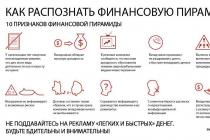In the field of trade, there are many specific rules and methods by which you can increase the efficiency of sales. Besides, in trading business there is always the possibility of loss, damage or expiration of the sale of goods. One of the ways to minimize losses is the rotation of goods. From our material you will learn what product rotation is, as well as some other tricks and intricacies of trading.
What is product rotation?
The word "rotation" itself comes from the English rotation, which means "rotation" or "movement in a circle." This term is used in different areas, for example, in the field of personnel management it is “personnel rotation”, and on television, the word “rotation” refers to the periodic playback of a clip or commercial.
Also, this term is widely used in the trading field. What is product rotation? This principle is quite simple - the product that came first should be sold first. It often happens that at the time when the next batch of goods arrives in the store, the products from the previous delivery have not yet been sold out. But the expiration dates of goods from different batches may vary. If every time new delivery goods to put it on the shelves, then products from old batches may be “overwhelmed”, as a result of which it will become unusable due to the expiration of the deadline for implementation. Fresher products should be placed behind those that were made earlier. Perhaps this is the main principle of product rotation.
Product rotation starts from the warehouse
In order to prevent the delay of the goods, you should start to rotate it while still in the warehouse. With regular shipments, new batches of goods may arrive at a time when the old ones are not yet sold out, and there are still some boxes or packages of less fresh products in stock. Care must be taken to ensure that the first batches of goods are not cluttered with subsequent deliveries. 
The rotation of goods in the warehouse is as necessary and important as in the shop window. It may well happen that the loader delivering the goods to the warehouse will constantly put newly arrived products in front without bothering to rotate them. All this requires strict control by the sellers, as well as the warehouse manager. Expiration dates should be carefully monitored, and the goods should be placed in the warehouse so that the tags on the boxes with the end date indicated on them are turned outward and visible.
Stocked shelves are the key to efficient trading
Some sellers prefer to wait until the old product is completely sold before displaying fresher products. However, this is not quite the right approach, because half-empty shelves are unlikely to attract attention. potential buyer. And if we are talking about the supermarket, then at the end of the working day of the responsible seller, the goods on the shelves may simply end. 
Moreover, you need to ensure that the shelves and showcases of the store are properly filled with goods. So, the rotation of goods on the shelf can be done as follows: old products are completely removed from the display case, then fresher ones are put back. After that, the goods standing there are returned to the place, and at the same time the expiration dates are checked along the way.
What if there are a large number of products with an expiring date?
Sometimes a situation arises when a certain amount of goods is found, the sale period of which will presumably expire before it has time to sell. In the case when the rotation of goods no longer helps, you need to try to increase sales. You can put the products in an additional place or, for example, in the refrigerator, if it is beer or soda. It should be borne in mind that in the cold season, chilled drinks are not in great demand.
In situations where the probability of damage to the goods is high, for example, this product has a short shelf life, the rotation of the goods should be carried out with special attention. Also in such cases, a system of discounts is practiced, but this is from a slightly different area.
Partial rebranding, packaging design change
Many manufacturers periodically update the visual design of their products, change the form of packaging or labels. On the one hand, the rotation of goods becomes easier and more efficient, because the product from different batches in such a case can be distinguished from afar, for this you do not have to look for an expiration date on each package. It remains only to sell products in outdated packaging, after which only goods from fresh batches will remain. 
However, in a supermarket where customers have easy access to the shelves with goods, the new visual design of products will attract them more. It often happens that there is one or two units of a product left on the shelf that no one wants to buy. In such cases, you can display in an additional place or, in the end, discount it.
And now let's move on to the rule "Keep it right." Each product has a certain shelf life, so always use the rotation principle when restocking perishable products. Rotation is the movement of products on a first in, first out (FIFO: first in, first out) basis to ensure that products are used while they are still fresh. You have probably come across this rule more than once when shopping in supermarkets: if you take the first product from the display in the refrigerator, then most likely it will have a shorter shelf life than the product that is in the very depths. The same situation should be in the kitchen or bar of your restaurant. This will avoid product loss after the expiration date.
Very often in my work I encountered non-compliance this rule: they sold four packages of juice, ordered four, but those that were in the depths did not move forward and, as usual, according to the law of meanness, at the moment of steaming, a package with expired juice was at hand.
To use time as a control factor, you must:
- * apply to containers with ready meals, semi-finished products, etc. labeling indicating the time of their preparation;
- * write off ready-made meals and expired products;
- * do not store unlabeled products.
For the convenience of tracking the expiration dates of the blanks that are made in your restaurant, it is recommended to use technological markers. The technological marker is stamped with the date, time and expiration date (storage) of the blank, as well as the signatures of the cook who made this blank, and the manager or chef who checked the correct execution of the blank. This allows, on the one hand, to always have visual information about the expiration dates, on the other hand, to control the stable quality of the finished product.
After checking the incoming products, they must be sorted into groups, sanitized and immediately removed to the place where they should be stored. Food products from factory containers should be transferred to in-shop gastronomic containers with labeling.
Unprocessed vegetables, fruits, fresh herbs (especially in pots), eggs should not be stored in kitchen refrigerators - only in the primary processing area!
I want to draw your attention to the processing of eggs. Before use, eggs are washed with a warm 2% solution of soda ash, then disinfected with a 0.5% solution of chloramine and rinsed with running water (in a marked colander). I once talked with a familiar chef and asked him out of curiosity when his chefs wash poultry eggs - before cooking or immediately after receiving them? To which he replied: “What are you laughing at, why wash the eggs? They come to us clean, they are washed and packaged at the poultry farm.” Such a dangerous naivete! Dear restaurant managers, read carefully what salmonellosis is and how it is infected.
In accordance with the standard, medium-temperature upright refrigerators are used to store, as a rule, one group food products(confectionery products) or products of various names, but used as preparations for dishes (vegetable, meat, fish, sauces) or for preparing the same type of dish (pizza preparations, dough). Vertical low-temperature refrigerators are suitable for storing frozen semi-finished products and products different groups(meat, fish, vegetables, seafood).
When storing different groups of products, strictly follow the rules:
- * commodity neighborhood;
- * epidemiologically significant products (dairy, gastronomic or raw and pickled, vegetable, used for food without heat treatment) should be stored on the top shelves;
- * All products must be stored in containers with lids, cling film or foil.
When storing products in a vertical refrigerator, they must be distributed according to their intended purpose:
- * confectionery;
- * raw processed vegetables;
- * raw meat, fish semi-finished products; at the same time, the fish must be placed at the top, below it - beef, pork, even lower - chicken meat;
- * blanks for dishes;
- * pizza;
- * defrosting;
- * storage of frozen products.
The most optimal solution for storing products in horizontal refrigerators is to use each compartment for one group: meat, fish, vegetables, salad. In the presence of multi-component dishes, another option is possible - to store the components of one dish on one shelf of the refrigerator compartment.
Never overstuff the shelves: this reduces the air circulation needed for efficient food storage.
For companies of all sizes dealing with retail, is a very important question about the rotation of their own assortment. Of course, it is necessary to spend quite a lot of money, time and effort on this process, but believe me, it's worth it. You will spend much more effort to maintain order in the assortment without using rotation.
The word "rotation" itself means "rotation", "moving in a circle". So it is, because your assortment is constantly rotating, from which the word “turnover” was coined. The goods initially move from the manufacturing company to the distributor, from there to the real estate warehouse, then to the trading floor. It would seem that, simple circuit, but working with a large number of goods becomes quite difficult.
The first movement of goods is its receipt from the supplier. At this stage, the goods must be regulated, contracts with the supplier must be concluded. Worth paying Special attention into three points: what is the expiration date of the product, how many units is the minimum shipment rate, and in what time frame will the delivery be made.
The other two items should depend on the expiration date. If the shelf life is short, then the customer should keep about half of this time for implementation. You can, of course, leave less time, while reducing the purchase price, but then you take a big risk.
How more product you order one time, the easier it is to make your application. To do this, you can order goods from brands that deal with different products in order to include as many goods from different categories as possible in one application. Also, difficulties may arise if your network does not have a distribution center and the supplier will need to deliver the goods to individual stores.
Delivery times should be no more than 24 hours in the city or 48 hours in the region. If the supplier names long terms - feel free to leave him, you can find a replacement for him on more favorable terms. This is important, since the realtor must have a minimum of goods in stock when submitting an order. If you correctly perform rotation, this will save space for warehouses.
Ordering must be planned carefully. Proper order scheduling can ensure you reduce expired inventory, reduce storage space, and keep inventory in store. First of all, you need to know how often to deliver goods. If you do this too often, the goods will be stale in warehouses, if rarely, there will be a constant shortage of it. Secondly, you need to calculate the average sales this product for the period between deliveries. The goods should always be present in the warehouse, but not in too large quantities. And you should also forget about what is in the windows - it also needs to be sold on time. So making out new order you must order the quantity of goods that is sold between deliveries, add to it the quantity of goods on display and subtract the minimum stock in your own warehouse from this. Calculate whether it is profitable for you to order goods in small lots, or you will spend much less effort and money on delivery by ordering large lots. With this in mind, set how often orders will be made.
Be sure to follow the order of orders - the earlier the batch arrived, the sooner it should be sold. This should be monitored by the warehouse manager and the seller.
You also need to rotate by price category. There is a product, the price of which changes several times a year, for example, depending on the season. There may be different options for such a rotation, but the most effective and used is the option when prices change the very next day after the batch arrives at the new price. During this day, you can usually sell the remaining goods at the old price.
Cycle start
The original meaning of the word "rotation" is "relocation". It is not surprising, because the goods initially move from the distributor to the retailer's warehouse, and then, in parts, they enter the trading floor. Despite the simplicity of the scheme, when working with a wide assortment, this process is very complex.
The first step in moving goods is receiving them from the supplier. To regulate it, it is necessary to discuss the expiration date of the goods, the minimum shipment rate, and the delivery deadlines when concluding contracts. The shorter the shelf life of the product, the more attention each of these items requires.
Delivery time
The shorter the shelf life of the goods, the higher the requirements for the rest of the sales period should be. On average, it should be 50-70%% of the total gap. It is possible to agree with the supplier on the goods with terms less than agreed. But the supplier in this case assumes all risks. And reduces the price (5-10%%), given the efforts of the retailer.
Minimum lot
If the network operates through a distribution center (DC - in the future), then it is quite simple to collect a general application. It is more difficult to negotiate with the distributor about the delivery of small batches to each individual store. Preference can be given to brands whose distributors supply a significant range of various products. It is easier to collect a weighty application.
Application deadlines
Self-respecting distributors practice delivery within 24 hours within the city in which there is a warehouse. And 48 hours - to any other point. For other distributors, such terms can be set as a condition of work. If they cannot fulfill them, there is no need to support market outsiders. It is more difficult to work with suppliers (including manufacturers) who do not have a developed logistics service. In part, this issue can be solved by your own transport (if it is within the same city and subject to an additional discount, of course).
Delivery time is so important because it is desirable for a retailer to place orders with a minimum amount of goods in stock.
Competent rotation allows you to save storage space, each M2 of which in modern conditions very expensive.
Order planning
Quantity rotation
An optimal order cycle allows you to save storage space and money invested in the product, or take advantage of the distributor's delay, wrapping the product faster than its deadline.
The calculation of the order depends on several components. First, it is necessary to determine how often to deliver. Secondly, it is necessary to determine the average sales for this period. So you can get the required stock in the warehouse. It is necessary to add to it the stock in the hall, because the goods are also needed for display on the showcase.
Total: Order of goods = sales for the period + quantity of goods for display - product balance.
By reducing the periods between orders, the size of the order can also be reduced, and therefore there will be less need for warehouse storage space in the store.
Quantitative order planning allows you to save storage space and rationally invest in goods.
Shipping costs should not exceed the costs of using the money. In other words, if it is cheaper to buy a product in a larger batch than to often carry smaller ones, then it is worth going this way.
I repeat: the larger the distributor, the more profitable it is to buy goods from him. It's easier to make a meaningful application. It is likely that consolidation will continue in the distribution business, leading to the dominance of all-Ukrainian operators and uniform delivery and pricing standards.
Rotation according to deadlines
The most difficult element of rotation. The principle of FIFO (first in - first out) will be mandatory for compliance, which means the following. A batch of goods that arrived at the warehouse earlier goes to the hall earlier.
On a domestic example, the violation of this principle is as follows. Assume that the 1st batch of goods is capitalized and put into the warehouse in the appropriate cell. Naturally, it was not sold without a trace, and at the time of arrival of batch No. 2, 2 boxes from batch No. 1 remained. The loader, following the method of least resistance, unloaded lot #2 onto the rest of lot #1.
The seller, taking care of the rest of the goods in the hall, comes to the warehouse for replenishment. It also acts on easy way and takes the top drawer, which belongs to lot #2. And this can continue indefinitely, or until the supplier's supply fails; or sales unexpectedly outperform expectations. In this case, the commodity residues will be "cleaned" to the end and the remains of batch No. 1 will be found. Naturally, the goods in them will often be expired.
This is an example of the simplest error. Unfortunately, there are cases when lots No. 1, 17 and 24 were mixed in the warehouse. It was simply impossible to do without checking each box. And the supplier will be right if he refuses to accept claims for a product whose expiration date has expired, say, a month before the retailer's request.
The way out is the constant control by the sellers and the warehouse manager not only of the quantity, but also of the terms on the balance of the goods. All boxes must be tagged facing outward so that the end date is visible.
As an option - conducting reconciliations of terms along with a shift change.
Rotation according to price
For most products, the price changes several times a year. And for some, both upward and downward. A classic example is dairy products. The peak of its consumption is in winter, as well as the peak of prices for raw milk. In summer, on the contrary, both demand and the purchase price fall. The question arises how to regulate the price. The recalculation option is unreasonable. These operations will take unimaginable time. Recalculation exactly after the sale of the last unit of goods received at the old price only outwardly is optimal, but technically it is very difficult to implement.
This will especially affect the work with price tags. Sellers will constantly receive complaints about the discrepancy between the cost at the checkout and in the price tag in the window. This technology is a question of the future, when control methods will be improved and price tags will be managed from the central office.
In the meantime, even for retailers using electronic price tags (like Tavria V), each of them is configured manually. The most common practice is to change prices the next day after a new arrival. It is assumed that for this day the remains can be sold at the old prices.
Competent product rotation can become one of the main trump cards of the store in competition. To do this, it is important for the owner to know exactly when and on what basis to update the assortment. Before reducing or expanding the range, it is necessary to analyze external and internal factors. And in order to ensure a stable supply of goods, it is necessary to properly organize work with wholesalers.
Product rotation: recommendations from store owners from different areas
Irina Krechkevich, owner grocery store, Guryevsk (Kaliningrad region)
Once every six months I look through the product matrix and display a product that has become irrelevant. More often, such an analysis is not necessary, since a period of 1–2 months is not indicative, demand in one way or another fluctuates depending on the season. And sales over the past six months may well give an adequate picture. New products are introduced a month before the start of the season. For example, in March-April we form a beer base for the upcoming season - we decide on the layout, purchase volumes. And when suppliers come in July and offer to buy beer, even at a very favorable price, I have to refuse. If the client did not see this product at the beginning of the season, then in the middle of summer he is no longer interested in it. That is, the buyer decides on the choice of beer in May and all summer comes for a specific brand. In general, we have many positions that we introduce or reduce depending on the season. Suppliers usually do not have questions. If we take only seasonal goods from them, then we do not hide the fact that they are of interest to us only during this period. They come a month before the start of the season, we work together, and after 3-4 months we exclude this position.
- Pricing methods: how to set the optimal price for a product so as not to burn out
Konstantin Safarov, co-owner of the Neposeda store, Salekhard
We sell few seasonal goods, therefore there are no unconditional grounds for the rotation of the assortment. But it is impossible to sell the same thing all the time. Firstly, the demand for specific models of toys does not last long - these are not products that are purchased as they are consumed, and secondly, something new constantly appears on the market, while other products, on the contrary, become obsolete. Therefore, we decided that we would carry out a global analysis of the assortment and replacement of positions at least twice a year - in summer and in November. In November, we order more new products to provide a good choice customers who come to us in December for New Year's gifts for babies. After that, novelties that were in great demand are introduced into the permanent assortment. And for this, we need to abandon those goods that sold worse than others at the end of the year - the place is limited, and we cannot expand the assortment indefinitely.
Leonid Kurashik, CEO retail network"Farmer", Belgorod
We regularly rotate products and update the assortment - we display products that are least in demand among buyers, and introduce those that could go better. Once a month we do an analysis and, depending on the results, we can replace from 10 to 30 positions. The total number of SKUs is on average 2,500 thousand, so we change less than 1%. First of all, we pay attention to whether the product is being bought. Profitability is not so important - if the product is in demand, then profitability can be controlled. And if the goods are not taken, then it does not matter whether it is large - nothing will help. Our goal is to gradually increase revenue from each nomenclature position. The selection is quite tough, since the sales area of stores is on average less than 150 m² and we do not have double faces, each position costs one face. It is clear that there are seasonal fluctuations, but the assortment, depending on the time of year, practically does not change, we simply increase the purchase of certain items for several months. IN big stores additional places are allocated for seasonal goods - pallets are placed between the racks. We do not have this opportunity, so we are forced to change the display on the shelves.
Marina Kiseleva, owner IP Kiselev, St. Petersburg
Clothing sales is an industry where frequent product rotation is especially important. Customers are used to finding something new when they come to the store. I think if a person visits us three times and sees the same permanent collection, he will never come back. Therefore, I am not limited to the seasonal rotation of the assortment. Of course, these changes are most noticeable - in autumn and spring we order more raincoats and cardigans, in winter - woolen and knitwear, and in summer - light dresses and sundresses. But even during each season, we constantly change something in the assortment. It helps, of course, that we work with different manufacturers. They do not release new collections at the same time, so we can often reorder interesting things. We change the goods in the hall at least three times a season. If we see that a promising, in our opinion, thing “does not work”, sometimes we simply remove it from the hall for a while, and the next time new products arrive, we add this model to them.














